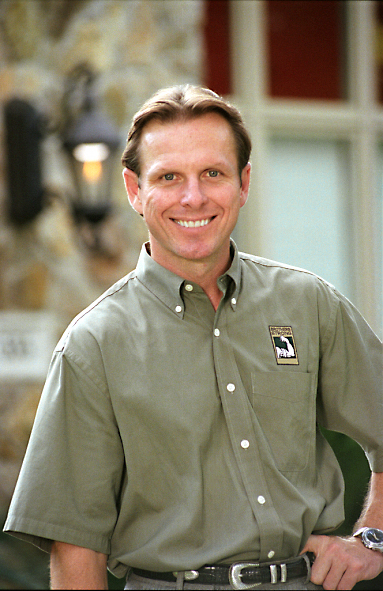
So having devoted two blogs to stating the case for making a profit when building green, how or where do we start? I think some variation on the Hippocratic Oath of the fourth century B.C. would be first. You know, primum non nocere, “first, do no harm.” I guess back in the day when medicine was really in its infancy, Hippocrates, the father of Western medicine, got together with some other doctors and they agreed on some ground rules for the practice of medicine, including one that essentially said, before we try to fix the patient, let’s at least agree we will not make things worse by harming him.
As the green-built world goes mainstream in residential housing, I think we too should agree on ground rules for our businesses. For green builders and remodelers, my variation of the 2,400-year-old Hippocratic Oath would be “above all else, lose no money” or “above all else, do not leave any money on the table.” Because just like a good doctor, before we can make things better we have to agree not to make things worse. And if we are going to start out losing money when building green, we will definitely be making things worse. In fact, we owe it to ourselves, our employees, our families, our larger community, and yes, our customers, to make sure we are profitable in building green.
So the first commandment we need to learn when following the Green Built Hippocratic Oath is: 1. Put something in for everything. And that can be kind of tricky for someone new to green building because, in many cases, we don’t know what “everything” is to begin with. In traditional building, or what I like to call “obsolete building,” the more detail in our estimates, the better. If our estimating and production systems are accurate and reliable, we should be seeing a slippage of no greater than 2%. That means our actual construction costs end up being within 2% or less than the budget. We do this in part by learning that no matter how small the item, we must account for it in the estimate.
Other Blogs in this Series
My 1st CommandmentMy 2nd CommandmentMy 3rd CommandmentMy 4th CommandmentMy 5th CommandmentMy 6th CommandmentMy 7th Commandment
You may hope for the best case, but do not budget for it. In fact, you should budget for realistic scenarios. This means we must include small direct construction cost items like generators, temporary air-conditioning units on-site, utilities, weather protection systems and floor coverings, mid-production house cleaning, etc. But with green building or remodeling, some of the people you are working will be new and you may not have a track record of working with them. So, unlike with your longtime trade partners, you really have to be diligent in interviewing your new trade partners to find out what they may not have included in their estimates. You may need to budget extra time for them to complete their work until you know how reliable the work schedules are that they gave you.
And don’t forget to budget for systems failures that need to be repaired. For example, best green building practices require you to seal your ductwork during construction to keep your construction dust and debris from getting inside. Has your HVAC partner budgeted for this? Have you? Will sealing them one time work, or will they have to be resealed every week? Will your painter apply no-VOC paint for the first time? Has he or you allowed extra time for the paint crew to get a feel for how the paint flows, or do you just have your regular number of weeks allocated for them to complete their work?
Thus, in order to follow our prescription to “first, do know harm,” we have make sure we have put something in for everything, no matter how small. Interview your trade partners extra hard. That goes for your production managers and superintendents. Get closer to and talk with your suppliers and manufacturers’ reps more than you ever have before. Ask lots of questions. Talk to your customers and help keep their expectations appropriately aligned. Raise your budget for 1/2% to 1% for slippage if need be. Expect the unexpected. Because whether you are rock climbing or building green, remember what the sticker on my laptop says: “It’s a significant emotional investment the first time you do it,” so you better be getting paid to do it right!
Weekly Newsletter
Get building science and energy efficiency advice, plus special offers, in your inbox.















6 Comments
The meaning of the Hippocratic oath
Michael,
I understand what you're saying. But I'm afraid you're doing violence to a spiritual precept. When Hippocrates' followers swore to "First, do no harm," they were making what amounted to a spiritual oath. They were promising to put the needs of their patients first. As Dr. Dennis Gersten, who has studied the history of the Hippocratic oath, noted recently, "It is an impossible task to try to capture the spirit of the original Hippocratic Oath while throwing out all mention of God, holiness, sacredness, and spirituality."
Equating this principle with “above all else, do not leave any money on the table” strikes me as — well, a little bit crass. Let's just call them two different principles, okay? Some may choose to follow Hippocrates; others may choose to follow Michael Strong. But I think your translation of (or variation on) "Primum non nocere" is a stretch.
When I read the first line I
When I read the first line I thought "Great - someone demanding we take responsibility for the houses we're working on." As in, Green Building's first responsibility is to make sure we're not screwing houses up more than we're helping them, by rotting them out prematurely, lousy IAQ, etc.
But it was not to be. I do agree with your caveat that we make sure we're covering the potential time lost learning and repairing new and experimental systems - I'll be spending a few unpaid hours tomorrow trying to get some triple hung casements to operate properly
Where do we find the motivation, and the profit?
One thing that has really helped me to be motivated to "take care of business" has been to put a profit sharing plan in place. I give away 40% of the money I take out of my company to my "stake holders" ie my employees. the result is that I can't responsibly beat up on myself and say "oh you dummy, blew the estimate again, you deserve to suffer." because when I suffer my whole team suffers, it motivates me to cover my bases on the estimate much more than if it;s just my pocket that gets thin when I screw up. I understand how CEO's feel about their investors (maybe) because I treat my employees as if they were investors (but I hold all the cards in real life, and all the down-side liability.)
But I'm not so sure the tools to find the profit lie in the P&L or the balance statement or even in percentage of completion accounting (we need to honor the legacy of the late Steve Maltzman as well as Walt Stoepplewerth here).
I think the tools to find profitability lie in informing the estimating process by closing the loop on job cost accounting and data mining past jobs to look for profit drains in the estimating process. How can we estimate for this new green stuff if nobodies ever done it before? We all enter our job costs into our QuickBooks accounts faithfully every week but how many actually take the time to tease out where our assumptions were right and where they were wrong and how much was the learning curve at the site and how much was optimism and delusion at the estimating desk?
I have a little slip of paper on my monitor, it says "you cannot hustle hard enough to make up for a sloppy estimate." Call it slippage, call it leaving money on the table, it's the dark cloud that saps the fun out of running a business.
Running a business can be a whole lot of fun! But, like any game, it's more fun when your winning.
Role Model
Michael Chandler,
I like your positive attitude, the way you treat your team ... and your business model.
We do not have to be greedy to be successful.
Taking Care of Business
There's a bit of truth to all the above posts. As a developer/builder of spec homes what I see as the most basic takeaway from the article is that any good business model has to have two components: First, give the customer a good value, and second, make a profit doing it.
The first refers to Dan Kolbert's comment about taking responsibility for your work. If every sub truly took responsibility (i.e. - did their work, to plan, on time, on budget, and provided quality input) and every GC made sure the customer's expectations were met or exceeded, then a customer is sure to feel like they are getting value for their money. As an additional reward, the builder gets a great reference.
It's the second part of the story, making a profit, that becomes difficult with 'green' building. Many of the technologies and systems are new. Many of the subs don't have a clue as to the building sciences or goals behind such implementations. GC's, and even inspectors, may have limited experience themselves in these new areas. Hence, therein lies the challenge for a good green building experience.
So, I would interpret Michael Stong's 'due no harm' adage as giving the customer a good value, while also agreeing with Michael Chandler's idea that playing the game is more fun when winning. To do that it's going to require a bit of extra work while builders, developers, and subs transition from 'obsolete building' to 'green building'.
The upside is the more the industry gains experience with green building techniques the faster this transition will occur. Despite the building industry's well deserved reputation of being a very, very slow adopter, it just might be the current wave of 'greeness' sweeping many segments of our society, will propel this transition forward in a rapid fashion. And that would be good for all concerned.
1% 2%
The Commandment Posts are great. I agree that my most accurate estimates include a figure for everything. Any time I leave incidental costs out, they add up quickly.
That said I can't imagine how your construction costs can be so accurate that they are within 1 -2% of your budget. What am I missing?
Can you predict within 1-2% what your fuel cost will be for commuting during the next 12 months?
You mention budgeting for " system failures that need to be repaired". How do you budget for an unknown failure(s)? How many failures do you budget for and are they "easy fixes" or real head aches?
The weather plays a huge role in construction costs. How do you account for such a variable?
Employees' get sick, divorced, need to pick the kid up from school at the worst moment and so on.
Every time we open a box to install a fixture it comes with a new set of proprietary systems for installation, (some are simple and others are complicated). Even if the installation is simple, there is often a missing or broken part in the box. How do you budget for these variations?
Shipments come late. Equipment breaks and causes delays. The list of variables is endless. I agree with your concept of accounting for as many things as you can, but unless you are a production builder -building the exact same house over and over, i don't see how anyone can predict costs that accurately regardless of how much "data" they have from previous work.
Log in or create an account to post a comment.
Sign up Log in